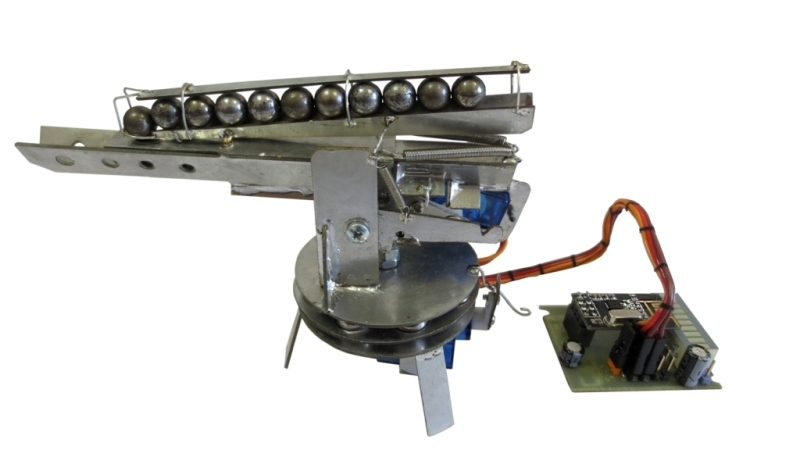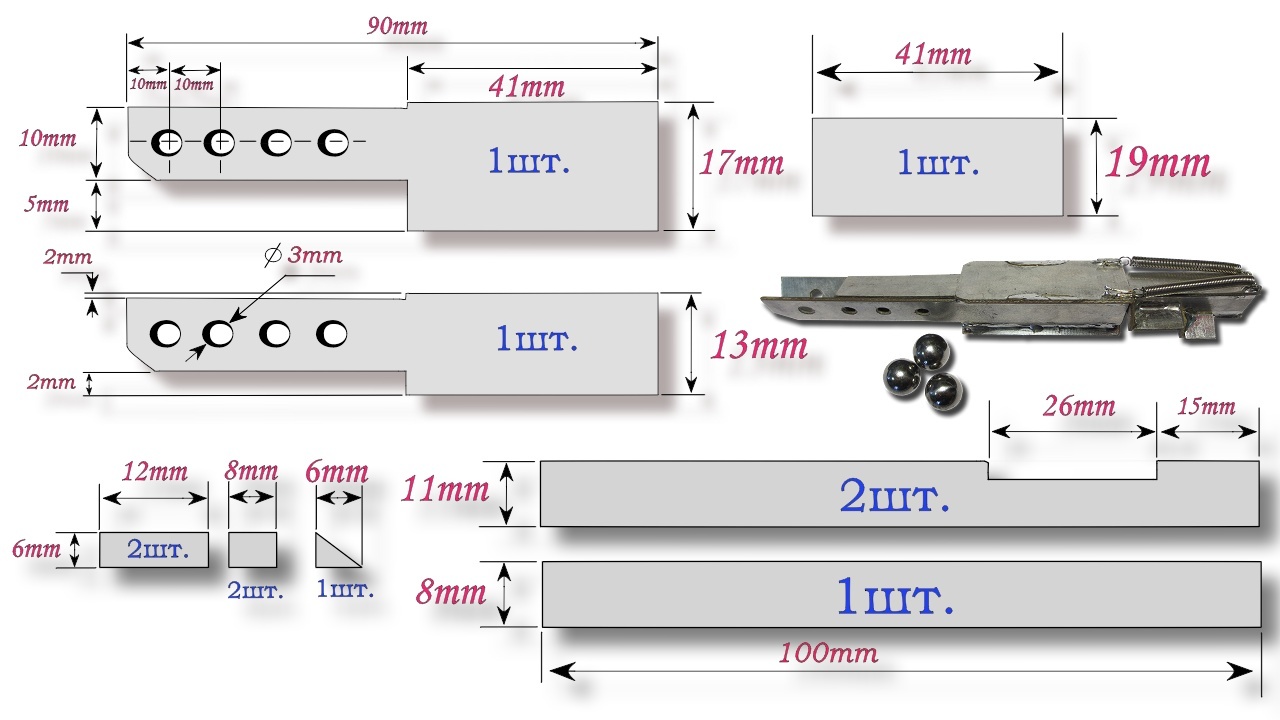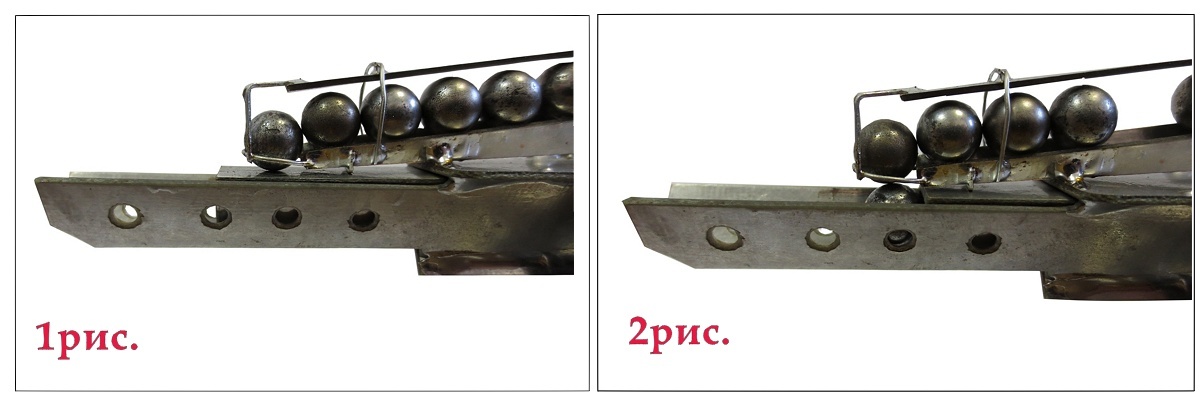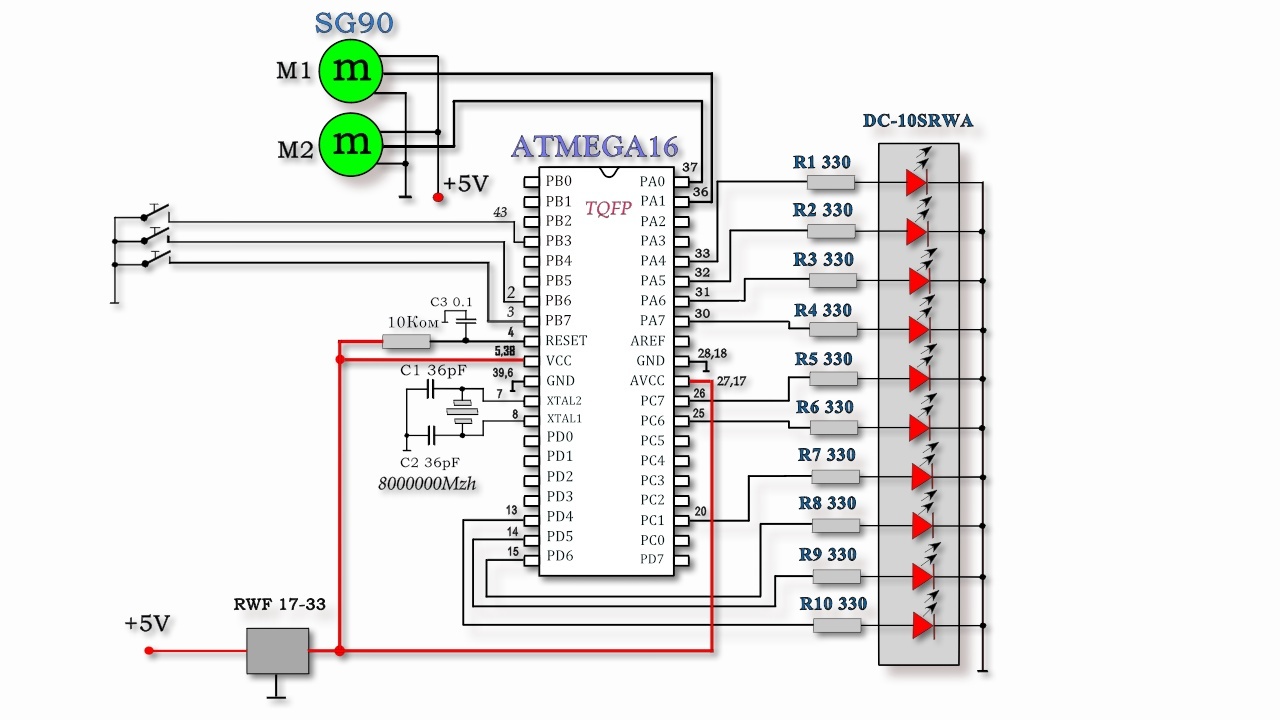How to make a robot (combat turret)
- Tutorial

Whoever is engaged in robotics, of course, wants to make a robot with his own hands. But not everyone, especially beginners, has enough knowledge to create a robot on their own. And immediately the question arises: how to make a robot, if you really want to?
To create a robot, in addition to the idea, radio components of different complexity will be needed. Also, you can not do without a chassis for the future robot and various mechanical parts. Of course, everything will depend on the scope of your project. But you can’t do without mechanics.
Perhaps someone prefers to use a ready-made constructor to create various robots. For example, "Lego". This designer has everything you need to create robots of varying complexity, but such a designer is not cheap. Yes, and agree, it is much more pleasant to contemplate your creation if it was made independently from "A" to "Z", from sketches on a sheet of paper to its full implementation on a planned scale.
For such creative people who are not afraid to work with their own hands to make a robot together with their child, the Turret model was developed for children's radio circles. Of course, this is not a robot, but based on my project, you can create various fascinating robotic devices. Moreover, everything is made of budget materials.
Swing Chassis Assembly

The swivel chassis for the turret is made of double-sided foil textolite, like most components for this homemade product. This material is very light and easy to process and has sufficient strength. Using scissors for metal, you can cut any suitable part.
The circular rotation of the gun in this project is not required, since a small sector of fire is needed. Accordingly, the SG90 budget servo was suitable for this task.
The chassis should hold the turret in place when firing and prevent it from turning over, since when testing this model the recoil of the gun from the shot was quite large.
For the swivel chassis, I used a homemade thrust bearing. Thus, the chassis turned swivel, and due to the weight of the metal balls it was quite stable, although the turret still moves slightly when fired. I even had to reduce the power of the shot a bit.
Gun or gun assembly

I had to tinker with the turret gun. Of the many tried and tested structural options, I chose this option (Fig. 1). In this design, it was easy to load metal balls with a diameter of 8 mm into the barrel, since the design of the gun was very strong. To prevent the ball from rolling along the barrel and its position was clearly fixed, through holes were made in the barrel.
Mounting the gun on the rotary chassis and the mechanism for cocking and lowering the gun

Having installed a gun on the swivel chassis, I began the assembly process of the cocking mechanism. To achieve this goal I was helped by the servo SG90. The servo force is enough to pull the springs. As soon as the shock part was in position, the latch worked, which kept the barrel cocked. In this position, the cocking lever of the servo, located in the lower part of the barrel, simply interfered with the shot.
To implement the shot, I applied a simple and reliable method. As soon as the latch has fixed the barrel (Fig. 1), the servo must return to its original state. At a certain point in its path, the servo pressed the trigger and at the same time reset the latch holding the shock. In this case, a shot was fired.

The store is designed for 12 metal balls taken from the bearing, although you can easily shoot large beads. To simplify the flow of balls into the barrel, I placed the store at a slight angle. The barrel loaded with balls under its own weight, they simply rolled to where they needed to. The initial position of the drummer blocks the supply of metal balls (Fig. 1). As soon as the drummer leaves, the upper ball falls.
But a problem arose: when a metal ball fell, it began to roll. To solve it, I made side holes in the trunk. They hold the position of the ball, preventing it from moving (Fig. 2).
Used electronics


for radio robotic turret I applied fee, previously developed for the " Siege Catapult "
Given that it is unlikely that someone will repeat the radio joystick I made, since it is quite complicated, I present an option that is much simpler to execute, although I left the wiring on the printed circuit board under the radio module.
As you can see from the circuit diagram, the joystick is quite simple and consists of three clock buttons connected to the microcontroller. Two tact buttons rotate the turret to the right or left. The remaining tact button gives a shot command. Those who have some knowledge of microcontroller programming can write their own version of the program for the microcontroller.
For example, by equipping the device with a distance sensor, it is possible to realize automatic fire as soon as an object is detected at a given distance. Since I developed this home-made product as the basic model for a children's radio mug, the equipment and complexity of the product, respectively, can also change.
Buy servos
How to make a robot - Circuit, firmware, dimensions
